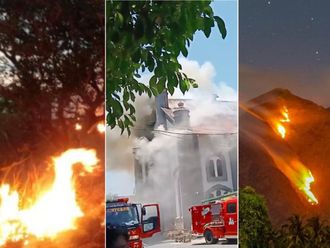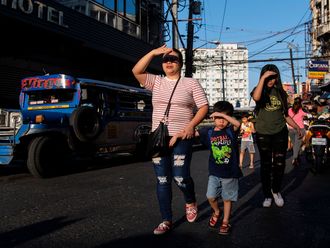Manila: The Philippines has launched the first of two modern missile frigates, marking a “milestone” in the country’s naval history.
In ceremonies at the Hyundai Heavy Industries in Ulsan, South Korea, Philippine officials launched the 107 metres long, 2,600 tonnes BRP Jose Rizal.
Photos of the new vessel’s superstructure were posted in various websites.
The second frigate, the BRP Antonio Luna, marked its keel-laying rites also on the same day.
Reports reaching Manila said the Rizal will be the best equipped naval asset in the Philippine fleet and will be officially commissioned into service sometime next year.
“We will soon be deploying the brand-new frigate, with anti-submarine, anti-surface and anti-aircraft as well as electronic warfare capability to patrol and protect our vast territorial waters,” Zata was quoted as saying by the state-run Philippine News Agency (PNA).
Currently, the Philippines has no floating weapons system platform that possesses all four capabilities.
The Rizal will also be the first combat vessel acquired by the Philippine Navy based on its own specifications and are “brand new.” All other vessels in the fleet, except of the two new landing platform dock ships, the BRP Tarlac and BRP Davao, were acquired by the country in “used” condition.
The Philippines had earlier claimed that it has three frigates in its fleet, the flagship BRP Gregorio del Pilar, BRP Ramon Alcaraz and BRP Andres Bonifacio, but the classification of these vessels have been downgraded to “offshore patrol vessels” due to its limited armament and capabilities.
With each displacing at 3,250 tonnes, all three vessels however, are bigger in comparison to the South Korean-built frigates.
The two new frigates will be acquired under the Phase 1 of the three-phase Horizon Military Modernisation Programme which was started during the administration of President Benigno Aquino III.
From being fully committed to meeting threats from local insurgent groups such as the New Peoples’ Army and foreign influenced terrorist groups in Mindanao, the Philippines had adopted a more outward looking defence posture.
Over the past several years from the Aquino administration to under the present leadership of President Rodrigo Duterte, the country has beefed up its military resources by acquiring capital ships and modern aircraft as it faces threats from China.











